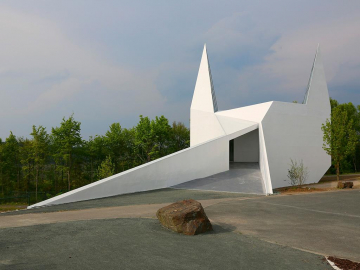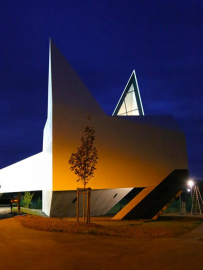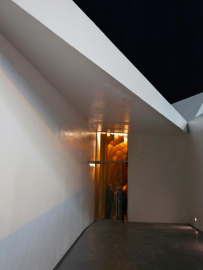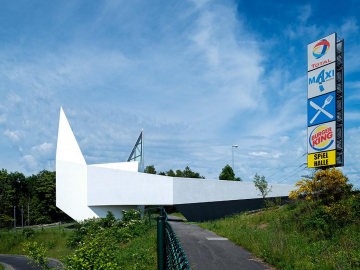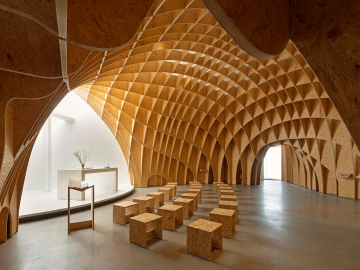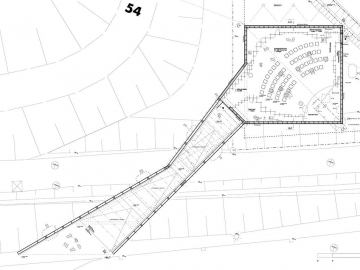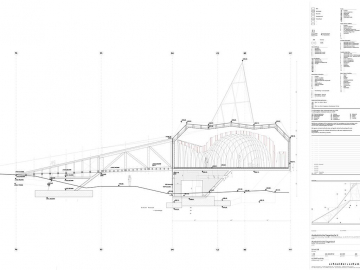Motorway Church
In March 2009 schneider+schumacher won a competition run by the Förderverein Autobahnkirche Siegerland e.V, which was founded for the specific purpose of establishing an Autobahn church. The initiative for this project came from Hanneliese and Hartmut Hering, after they had visited an Autobahn church in south Germany.
Just one glance at the map revealed that a place like this was lacking in the entire Siegerland area, and consequently also along the very busy A 45. The architects took on the project with the same empathy. Under the guidance of Michael Schumacher, it was designed in parallel with schneider+schumachers extension to the Städel Museum. The Christian-ecumenical church was realised thanks to numerous donations. Building work began in March 2011, starting with the archaic sculptural concrete foundation slab, which forms the base for the timber-framed church above.
The consecration and opening of this building, Germanys 40th Autobahn church took place in May 2013. The three-dimensional translation of the church pictogram a stylised white silhouette of a traditional village church can be seen from both the motorway and the service station. From close-up the church appears to grow out of the hillside and visitors enter it via a raised walkway leading to a covered entrance.
Once inside the design of the interior comes as a surprise. The inner dome opens up to the naturally lit area around the altar, illuminated only from above through the two church spires.
The plan of the new Autobahn church consists of a square nave with two corner towers and an access bridge from the southwest. All the outer walls are formed in timber-framed construction, with laminated timber elements used for the roof structure and the towers.
The entire façade of the church and the connecting bridge was sprayed with white polyurethane damp-proofing material. This protects the outer surfaces of the wood from both the ingress of damp and wear and tear, and gives the church a homogenous appearance.
Once inside the vaulted entrance, the inner dome opens up to the altar.
This area is naturally illuminated only via the church tower above. Within the predominantly square ground plan, semi-circular areas created by the inner dome at the edges allow the areas that lie outside the visitors line of vision to be used as a sacristy and as supplementary spaces e.g. for chair storage.
The majority of the building components were constructed off site, allowing an optimised and shortened on-site assembly period. The timber roof and wall elements are cavity-insulated. The inner and outer faces of the timber members are clad with panels of OSB. The walls of the bridge are half-timbered and the access bridge floor construction is clad on both sides with double-faced OSB. The inner dome consists of 66 vertical and horizontal semi-circular timber structural ribs, made up of 650 individual parts. The timber ribs are slotted into each other and secured in the slits cut into the panels, so the structure has not only rigidity but is also self-supporting.
Site: approx. 500m²
Gross floor area: approx. 240m²

